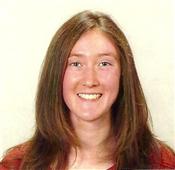Program Information
Design of a Small Animal Contrast Enhanced Dual Energy CT
R Martin1*, B Li2 , T Pan1 , (1) UT MD Anderson Cancer Center, Houston, TX, (2) Boston University Medical Center, Boston, MA
Presentations
TH-A-18C-8 Thursday 7:30AM - 9:30AM Room: 18CPurpose: Dual energy CT has a variety of uses in a small animal setting including quantification and enhanced visualization of contrast agent. This study aims to determine the best energy combinations for contrast enhanced DECT on the XRAD 225Cx (Precision x-ray), a small animal IGRT system with a nominal energy range of 20 – 225 kVp. Focus was placed on material density accuracy and low contrast detectability.
Methods: Simulations of single energy scans of an object containing concentrations of iodine varying from 0.5 to 50 mg/ml were performed using the simulation package ImaSim. Energy spectra from 50 – 220 kVp were calculated using the same software. For approximate Poisson noise modeling, mAs were chosen such that 30% of the total 10cGy dose was assigned to the low energy scan. A calibration involving projections of objects containing different thicknesses of iodine (0-0.5 mm) and water (0-50 mm) was performed for each energy and fit to a cubic equation as the calibration curve for each energy pair.
Results: Contrast to noise ratios of the iodine material images and accuracies in iodine density measurements were measured. Gradual improvements in each metric were seen with increasing high energy. Larger improvements in CNR were observed for decreasing the low energy. Errors in iodine density were generally close to 5% for concentrations of iodine above 3 mg/ml but increased to around 15% for 50 kVp, likely due to its proximity to the discontinuity caused by the k-edge of iodine.
Conclusion: Based on these simulations, the best energy combination for detecting low concentrations of iodine using a projection space calibration procedure is 50/200 kVp. However, if accuracy is most important 80/220 kVp is ideal, with 60/220 kVp being a good compromise to achieve both goals. Future work is necessary to verify these conclusions with physical data.
Contact Email:


